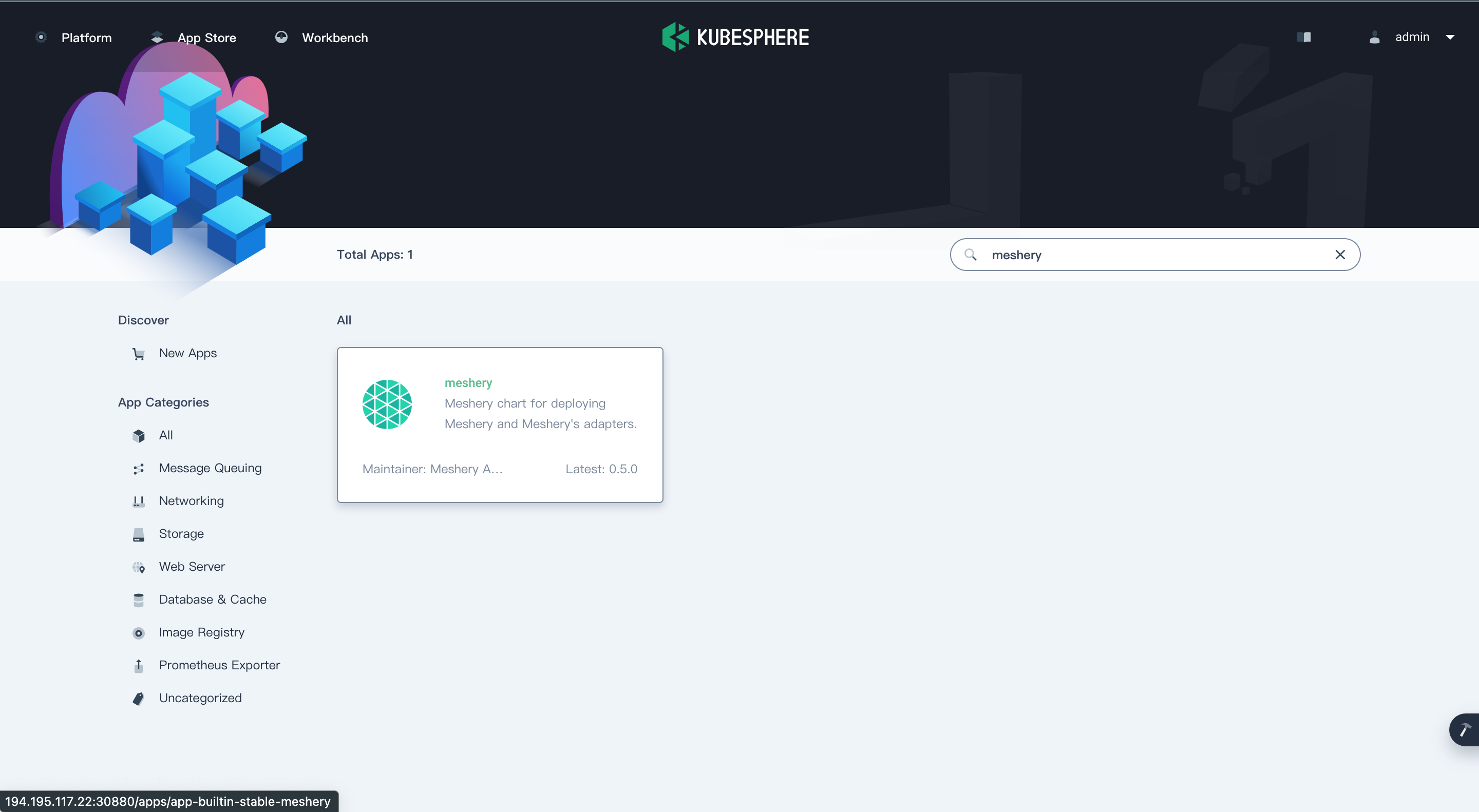
Deploy Meshery on KubeSphere
Meshery is the open source, cloud native management plane that enables the adoption, operation, and management of Kubernetes, any service mesh, and their workloads.
This tutorial walks you through an example of deploying Meshery from the App Store of KubeSphere.
Prerequisites
- Please make sure you enable the OpenPitrix system.
- You need to create a workspace, a project, and a user account (
project-regular) for this tutorial. The account needs to be a platform regular user and to be invited as the project operator with theoperatorrole. In this tutorial, you log in asproject-regularand work in the projectdemo-projectin the workspacedemo-workspace. For more information, see Create Workspaces, Projects, Users and Roles.
Hands-on Lab
Step 1: Deploy Meshery from the App Store
On the Overview page of the project
demo-project, click App Store in the upper-left corner.Search for Meshery in the App Store, and click on the search result to enter the app.

In the App Information page, click Install on the upper right corner.

In the App Settings page, set the application Name, Location (as your Namespace), and App Version, and then click Next on the upper right corner.

Configure the values.yaml file as needed, or click Install to use the default configuration.

Wait for the deployment to be finished. Upon completion, Meshery will be shown as Running in KubeSphere.

Step 2: Access the Meshery Dashboard
Go to Services and click the service name of Meshery.
In the Resource Status page, copy the NodePort of Meshery.

Access the Meshery Dashboard by entering ${NodeIP}:${NODEPORT} in your browser.

For more information about Meshery, refer to the official documentation of Meshery.
Feedback
Was this page Helpful?
Receive the latest news, articles and updates from KubeSphere
Thanks for the feedback. If you have a specific question about how to use KubeSphere, ask it on Slack. Open an issue in the GitHub repo if you want to report a problem or suggest an improvement.












 Previous
Previous
